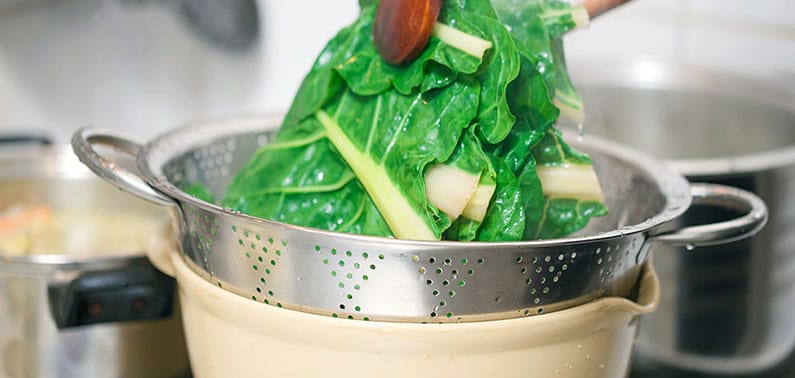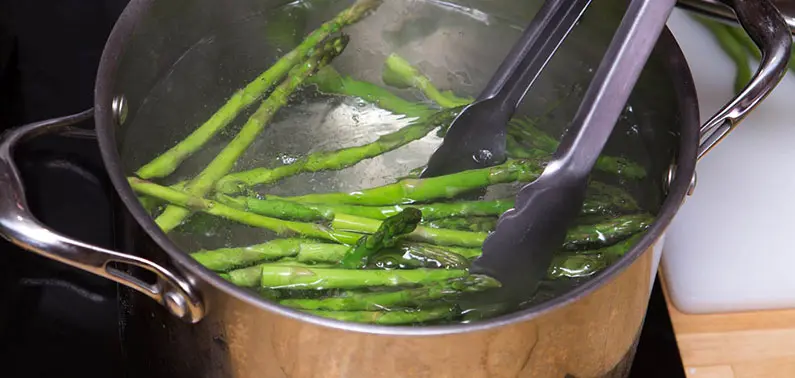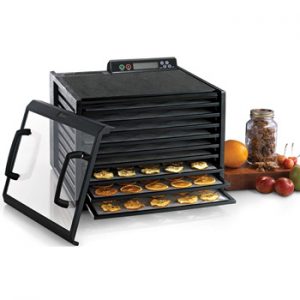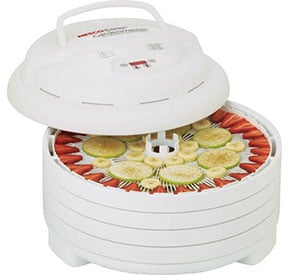
That way, the dehydrating process will be faster, and food will last longer. Unfortunately, some people tend to miss out this step. However, if you want bold, bright veggies that are bursting with fresh flavors, it is crucial for preparation process.
So, if you want to know why you should blanch vegetables before dehydrating, just keep reading.
Blanching Vegetables Benefits
The secret to getting the best results from your dehydrator is to blanch your veggies and prepare them for the drying process. It is very easy, and quick and most importantly it will make a huge difference to your dried meal. First, let us tell you more about the benefits of this process.
1. Retain Flavor and Color
Blanching vegetables prevent some of the natural enzymatic reactions from occurring. It cleans off the surface of the mold, bacteria, dirt and other organisms from the surface of food. Immersing them in steam or boiling water for a brief period maintains their quality, and helps protect the color and vitamins of the product.
2. Aid Dehydrating Process
In some vegetables which skin is tough like green beans, it can be difficult for the dehydrator to draw out all of the moisture from it. Blanching will help break the veggie’s skin, which will make the dehydrating process easier. It will relax tissues so pieces can dry faster.
3. Longer Shelf Life
Although the dried vegetables are very healthy, sometimes the enzymes can survive the dehydrating process.
‘’Blanching not only inactivates enzymes and reduces the microbial load but also improves color, texture, and protein stability of the vegetables. Peroxidase is the most popular blanching indicator enzyme to determine the adequacy of the process since it is one of the most heat stable enzymes present in vegetables. Furthermore, the addition of calcium during blanching has been found to enhance texture and shelf-life of the vegetables.’’ according to Food Processing and Technology.
How to Blanch Vegetables?
1. Steam Blanching
Use a deep pot that has a tight-fitting lid that could fit a sieve or colander, or that contains a wire basket so that steam can adequately circulate. Or you can use a steamer if you own one. Add a little water to the pot or the steamer and bring to boil. Into the basket place the veggies but make sure that is not more than 2inch deep.
Put it into the pot making sure that food doesn’t touch the water. Cover it and steam. Remove the colander or basket and put it in the cold water only long enough to stop cooking. Don’t cool them to room temperature. Place them on dryers’ trays. The heat from blanching process will give the food head start in the dehydrating process.
Recommended Time for Steam Blanching:
- Asparagus – two minutes
- Eggplant – six minutes
- Rutabagas – five minutes
- Turnips – five minutes
- Carrots – three to three and a half minutes
- Corn – not necessary
- Horseradish – not necessary
- Garlic – not necessary
- Okra – not necessary
- Mushrooms – not necessary
- Parsley – not necessary
- Onions – not necessary
- Parsley – not necessary
- Peppers – not necessary
- Peas – three minutes
- Potatoes – six to eight minutes
- Pumpkin – two and a half to three minutes

2. Water Blanching
Use a pot that is deep and has the tight-fitting lid or a blancher. Fill it with water, 2/3 full, and bring to boil after you have covered it. Into the basket put the vegetables, submerging them into the water. When they are done, remove them and put in cold water. After you have dry them, you need to place them on dehydrating tray.
Recommended Time for Water Blanching:
- Asparagus – two minutes
- Carrots – three and a half minutes
- Eggplant – four minutes
- Rutabagas – three minutes
- Soybeans – Green five minutes
- Squash Summer – three minutes
- Turnips – three minutes
- Corn – not necessary
- Horseradish – not necessary
- Garlic – not necessary
- Okra – not necessary
- Mushrooms – not necessary
- Parsley – not necessary
- Onions – not necessary
- Parsley – not necessary
- Peppers – not necessary
- Peas – two minutes
- Potatoes – five to six minutes
- Pumpkin – one minute
NOTE: It is best to start timing as soon as the veggies are in the water. Also, you can use the same water for blanching several times, just make sure to bring it back to boil before adding some other vegetables. Kale, cauliflower, cabbage, broccoli and other cabbage family crops need to be blanched for two minutes in boiling water.

Dehydrating Without Blanching the Vegetables
If you don’t want to blanch your food or you forget to do it, don’t worry. The veggies will be fine to eat although they may not last as long as you want and may lack a little in texture, flavor and color. Sometimes blanching vegetables can be an extra work, but you can try another way to make the drying process faster.
If you are dehydrating ones that have tough skin such as green beans, you can roll them between your fingers to damage the surface a little and soften it. That way, the dehydrator won’t have a problem to remove all of the moisture from the food.
Conclusion
Blanching is an important step before drying your food to ensure that it stays healthy without negative changes in their taste, color, and texture. It is the most common method of pre-treating food. This process kills many spoilage microorganisms, slows enzyme action, sets color and shortens the drying and rehydration times.
It results in a higher quality dried food with better storage life and colors. Vegetables should always be blanched before dehydration process. Just follow the recommended time for this method and make sure not to over blanch the food because you can destroy nutrients. Our guide will help you get the best results every time you want to dry your veggies!














How do you store dehydrated yam strips?
Do they retain nutritional values?
Just keep them dry and away from direct sunlight, you don’t have to refrigerate them. Also, I think they should retain most of their nutritional value. There is always a chance you may lose some due to heat.
Do you need to blanch celery before dehydrating?